Search the Special Collections and Archives Portal
Search Results
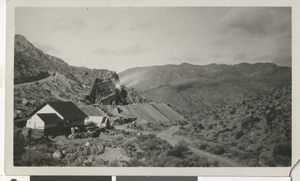
Photograph of mining company, (Nev.), 1916
Date
Archival Collection
Description
Image
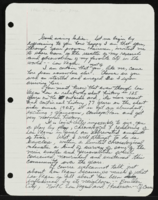
Handwritten speech by Roosevelt Fitzgerald about a brief history of Las Vegas, Nevada
Date
Archival Collection
Description
From the Roosevelt Fitzgerald Professional Papers (MS-01082) -- Unpublished manuscripts file. For an unknown event.
Text
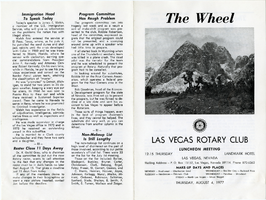
The Wheel Las Vegas Rotary Club newsletter, August 4, 1977
Date
Archival Collection
Description
Text
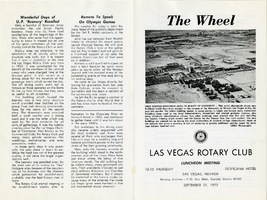
The Wheel Las Vegas Rotary Club newsletter, September 21, 1972
Date
Archival Collection
Description
Text

Transcript of interview with Isabella Jessie Curtis by Andrew B. Levy, February 15, 1979
Date
Archival Collection
Description
On February 15, 1979, Andrew Levy interviewed Isabella Jessie Curtis (born 1922 in Monroe, Wisconsin) about her experiences in Southern Nevada. Curtis first talks about her career in waitressing at several restaurants and casinos in Las Vegas before describing some of the early businesses in the Downtown Las Vegas area. The interview then moves to discussions on Curtis’s involvement in politics, her early recreational activities, and the atomic testing. The two later discuss the first telephones in Las Vegas, the Helldorado celebration, and her work at the Tropicana Las Vegas. The interview concludes with Curtis’s description on living in Sandy Valley, Nevada, and some of her first memories of the Union Pacific train depot in Las Vegas.
Text
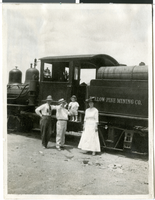
Postcard of a locomotive engine, Las Vegas, circa 1930s
Date
Archival Collection
Description
Image
James H. Down Sr. Scrapbooks
Identifier
Abstract
The James H. Down Sr. Scrapbooks (1933-1979) contain newspaper clippings and political advertisements about his political and civic involvement in Las Vegas, Nevada.
Archival Collection
Celesta Lowe Photograph Collection
Identifier
Abstract
The Celesta Lowe Photograph Collection consists of black-and-white photographic prints and negatives depicting images of Mount Charleston, Nevada, the Owens’ family ranch, family photographs, and gatherings of the National League of American Pen Women of Nevada.
Archival Collection
Celesta Lowe Papers
Identifier
Abstract
Celesta Lowe Papers (1943-1995) consist of clippings, published writings ("Echoes from the Archives" and "Southwestern Bookshelf" columns), correspondence, and photographs related to Southern Nevada
history. Also included are National League of American Pen Women and Pen Hens material.
Archival Collection

